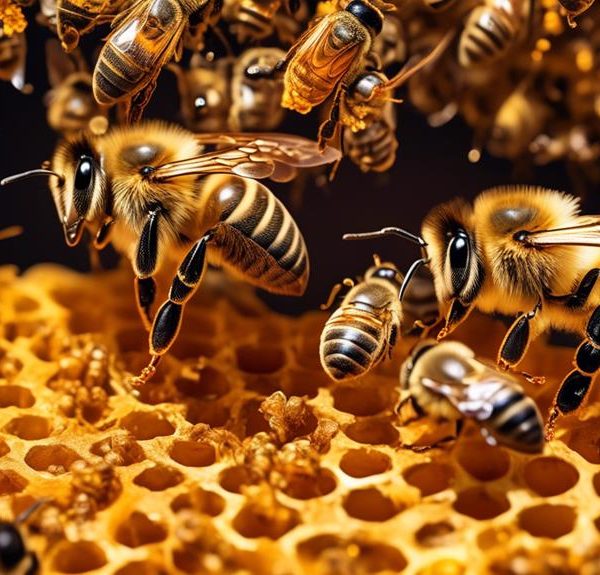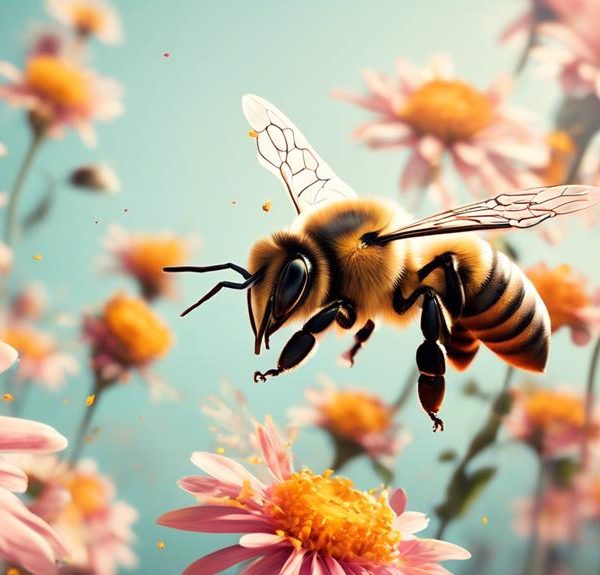Yellow jackets, hornets, and wasps aren't just stingers, they're master architects, crafting intricate paper nests from wood fibers; discover how and why they do it.
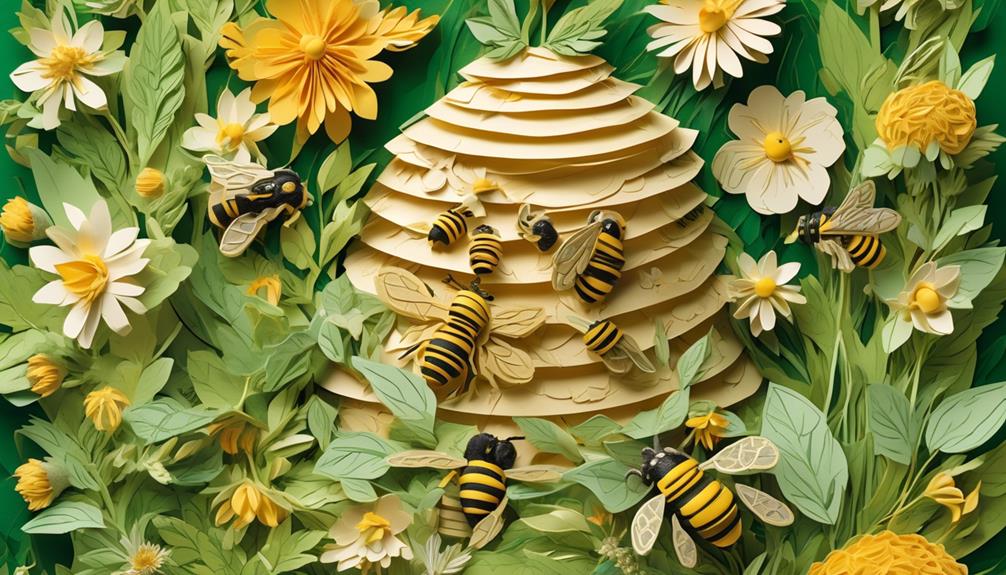
What Bees Make Paper Nests?
Honey isn't the only sweet secret hidden in the bustling world of bees. You've probably seen those unusual, grayish, papery structures hanging from tree branches or tucked under your eaves, but have you ever wondered which kind of bees are the engineers behind them?
Certain species of bees, like the wasps, hornets, and yellow jackets, have mastered the art of paper-making, transforming wood fibers into the building blocks of their astonishingly complex nests. But how exactly do they do it and why?
The answer might surprise you, and it's a journey worth exploring. Let's pull back the curtain on these master architects of the insect world.
Key Takeaways
- Paper nest bees construct nests using chewed-up wood pulp, creating unique paper-like structures.
- Temperature, humidity, photoperiod, and availability of nesting materials and food sources are environmental triggers for nest-building.
- Paper nest bees are significant pollinators, contributing to plant populations, biodiversity, and the production of seeds and fruits.
- Threats such as habitat loss, disease, climate change, and pesticide exposure pose risks to paper nest bees and their nesting behavior.
Understanding Paper Nest Bees
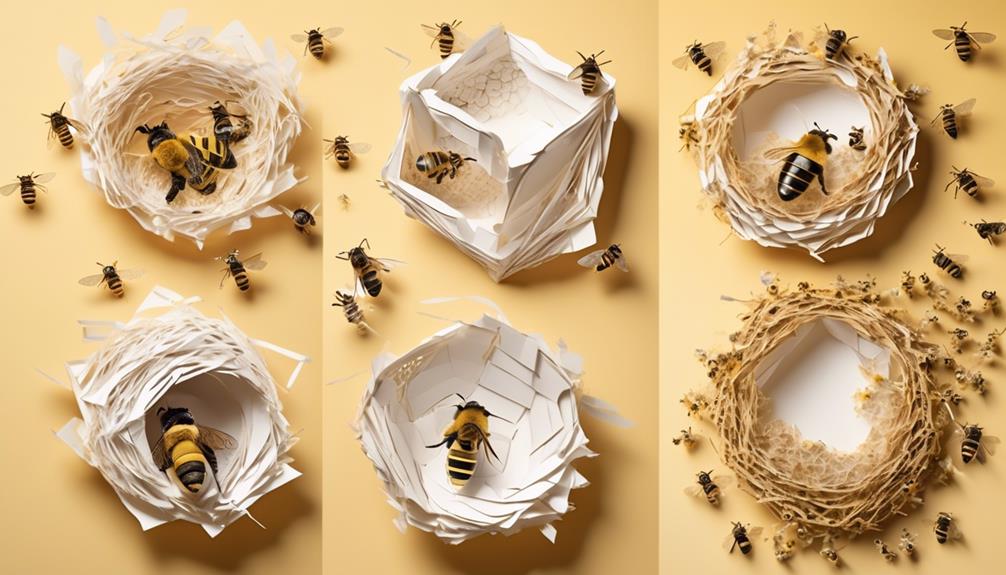
To fully comprehend the life cycle and behavior of paper nest bees, you'll need to delve into their unique habitat creation methods, their social structure, and their contribution to the ecosystem. These remarkable creatures construct their nests from chewed-up wood pulp, creating a paper-like material that gives these bees their name.
Paper nest bees are semi-social creatures, with a single dominant queen laying eggs and a group of workers tending to the nest. Their society isn't as complex as some bees', but it's still a fascinating structure worth studying. The workers, all female, will defend the nest, forage for food, and care for the young. Meanwhile, the queen's sole responsibility is to reproduce.
In terms of their ecosystem contributions, paper nest bees are significant pollinators. While they're not as efficient as honeybees, they still play a vital role in sustaining plant populations and the overall biodiversity of their habitats. Understanding these aspects of paper nest bees' lifestyle will provide you with a richer appreciation of these intricate, industrious insects.
The Nest-Building Process
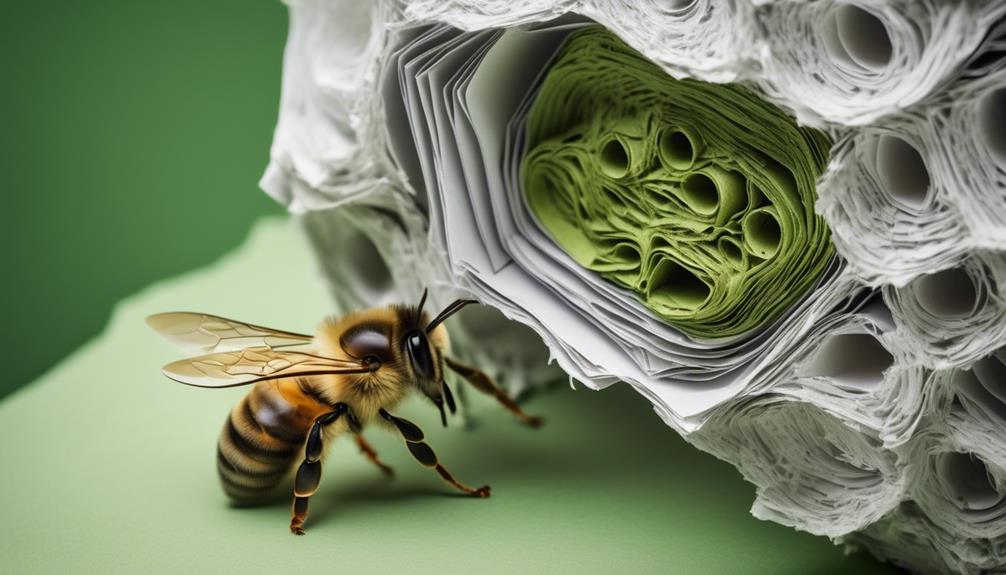
Now, let's delve into the fascinating process of nest-building, where these industrious bees transform wood pulp into a thriving, multi-chambered home.
Initially, worker bees harvest fibers from dead wood and plant stems, using their sharp jaws to strip off tiny fragments. This material is then mixed with saliva, creating a malleable pulp.
Next, they transport the pulp back to the nest site. Here, you'd see them meticulously layering the pulp, forming the initial structure of the nest. They apply the pulp in thin, concentric layers, creating a papery structure. It's a labor-intensive process that requires coordination and cooperation among the colony's members.
The nest continues to grow, with newer cells added to the outer edges while the older ones in the center mature. The design isn't random. It's a carefully planned layout, with separate chambers for larvae, food storage, and the queen.
This intricate, organic architecture reflects not just the bees' industriousness, but also their instinctive understanding of structural engineering. It's an ingenious strategy, evolved over millions of years, to create an efficient, sustainable habitat.
Through this process, bees demonstrate a fascinating blend of biology, engineering, and social organization.
Environmental Triggers for Nesting
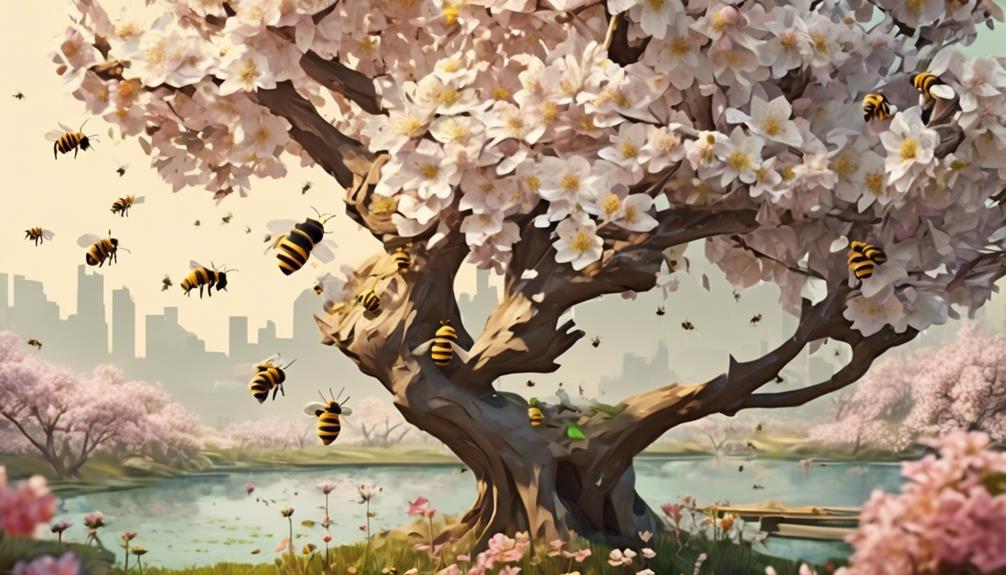
While the intricacies of the nest structure are indeed mesmerizing, it's equally important to understand what environmental cues trigger these bees to start their nest-building activities. You'll find that factors such as temperature, humidity, and daylight length play significant roles.
Temperature and humidity primarily dictate the timing of nest-building. When temperature increases, it stimulates bees to start constructing nests. Similarly, a certain level of humidity is necessary for the bees to manipulate the plant material they use for nest construction. If it's too dry, the fibers become brittle and hard to handle.
Daylight length, or photoperiod, also influences nest-building. As days lengthen, signaling the onset of spring, bees become more active and start their nest-building. Conversely, when days shorten, bees slow down their activities and eventually stop nest-building.
Moreover, the availability of nesting materials and food sources in the environment triggers nest construction. Bees tend to build nests in areas where they can easily access plant fibers and nectar. So, it's clear that these environmental triggers form a complex interplay that dictates when and where bees construct their paper nests.
Significance in the Ecosystem
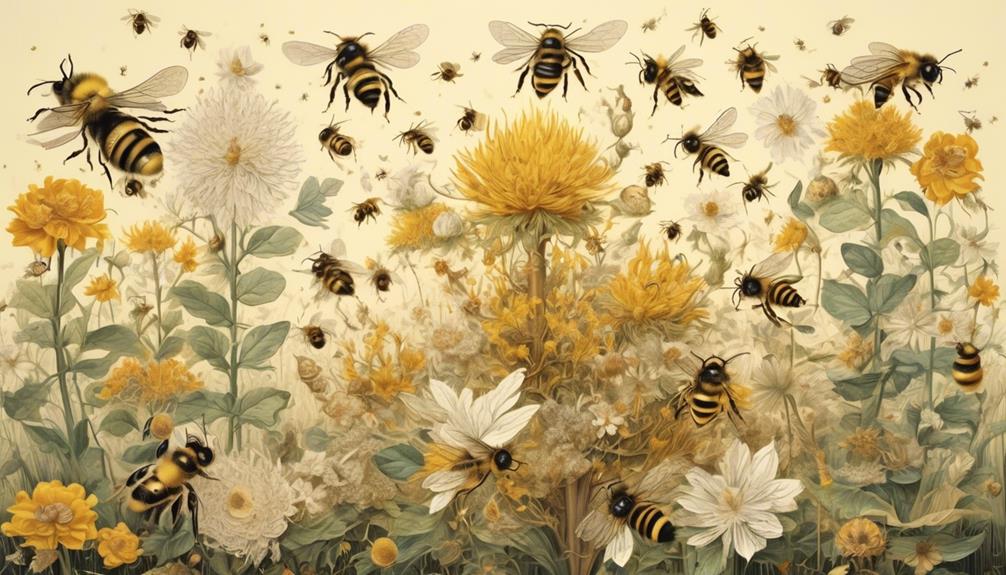
Understanding the significance of bees and their paper nests in the ecosystem involves recognizing their role as pollinators, resource recyclers, and food sources for other species.
Bees, particularly those species that build paper nests, are crucial for pollination. As you watch them flit from flower to flower, they're not just collecting nectar, they're transferring pollen, enabling fertilization and ultimately the production of seeds and fruits.
In this process, they're also recycling resources. The materials they use to construct their nests are predominantly plant fibers, which they chew and mix with their saliva to form a pulp. This not only repurposes plant waste, but also results in a biodegradable home.
Moreover, bees serve as a food source for various species, from birds to small mammals. Even their nests, after being abandoned, provide nourishment for decomposers, contributing to nutrient cycling.
However, the health of these pollinators is currently threatened, thereby putting our ecosystems at risk. Without bees, and specifically paper nest builders, we'd see a decline in biodiversity, plant reproduction, and food resources.
Hence, it's vital to protect these industrious insects and their paper nests for the health and stability of our ecosystems.
Threats and Conservation Efforts
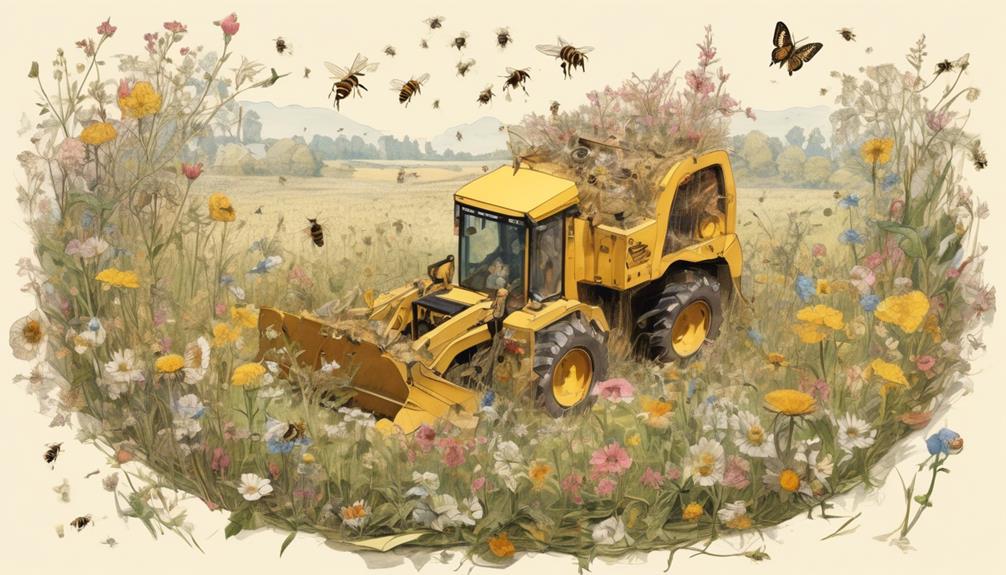
Despite the critical role bees play in sustaining our ecosystems, they face numerous threats that jeopardize their survival, making conservation efforts imperative.
These threats include habitat loss, disease, climate change, and exposure to pesticides. When you destroy a bee's habitat by logging, agriculture, and urban development, you're effectively reducing their food sources and nesting sites.
Disease, particularly from parasites like the Varroa mite, can decimate bee populations. Climate change, with its increasingly unpredictable weather patterns, disrupts bees' foraging behaviour and breeding cycles.
Lastly, pesticides, particularly neonicotinoids, are toxic to bees, affecting their ability to navigate, forage, and reproduce.
Frequently Asked Questions
What Other Insects Are Known to Build Paper-Like Nests Similar to Bees?
Apart from bees, you'll find that wasps are also known to build paper-like nests. They chew wood fibers into a pulp, which hardens to form a papery material.
Particularly, the bald-faced hornet, yellow jackets, and some types of paper wasps are skilled at creating these intricate structures.
Interestingly, even some types of ants, like the weaver ant, create nests using a similar method, but they use leaves instead of wood.
Are Paper Nest Bees Considered Dangerous or Harmful to Humans?
Yes, paper nest bees can pose a threat to humans. They're not typically aggressive, but they'll defend their nest if they feel threatened. It's their sting you should worry about.
Some people may experience allergic reactions. If you're stung multiple times, it can be quite dangerous. Therefore, it's best to avoid disturbing their nests.
If you find one near your home, consider seeking professional help to safely remove it.
What Are Some Practical Uses for Discarded Paper Nests?
You might find discarded paper nests useful in several ways.
Firstly, they're a potential source of organic material for composting.
You can also use them for crafting or educational purposes, like school projects.
In addition, some people use them as natural decorations.
However, it's important to ensure the nest is fully abandoned before using it, since some bees or wasps might still be inside.
Can Bees Re-Use or Repair Damaged Paper Nests, or Must They Always Build New Ones?
You're wondering if bees can repair or reuse damaged paper nests. In fact, most bees don't reuse their nests. They're programmed to create a new one each year. While they may patch up minor damages, substantial damage usually means the nest is abandoned.
It's quite fascinating, isn't it? This behavior ensures their colony's survival by avoiding disease spread that could occur in an old, reused nest.
How Do Paper Nest Bees Interact With Other Species of Bees or Insects in Their Environment?
You're asking about the interactions of paper nest bees with other insects.
It's a complex interplay.
Often, they're seen as territorial, defending their nests aggressively against intruders. However, they don't typically engage in open conflict with other bee species unless threatened.
Interaction largely depends on resources available. They'll compete with other insects for food, but they also play a key part in the ecosystem, pollinating flowers while they gather nectar.
Conclusion
You've just explored the world of paper nest bees, understanding their nest-building process and environmental triggers.
Their significance in our ecosystem is undeniable, yet they face numerous threats, necessitating urgent conservation efforts.
Recognizing their contributions and acting to protect them, we can ensure these industrious insects continue their essential work.
So, next time you encounter a paper nest, remember – it's a small, vital part of our world's intricate ecological tapestry.

